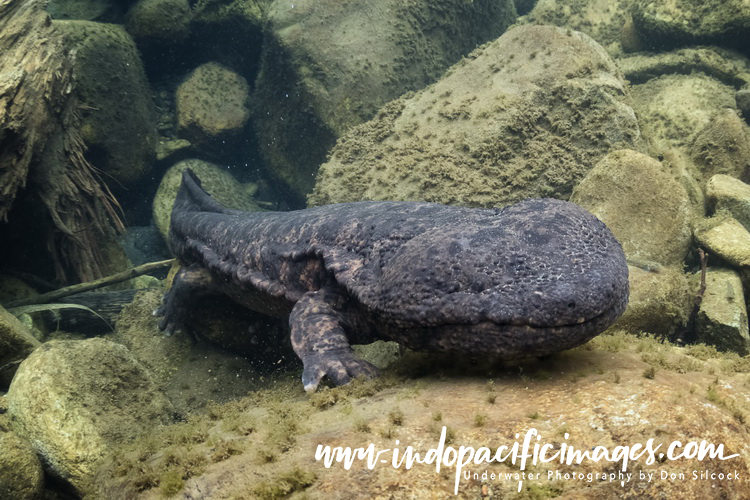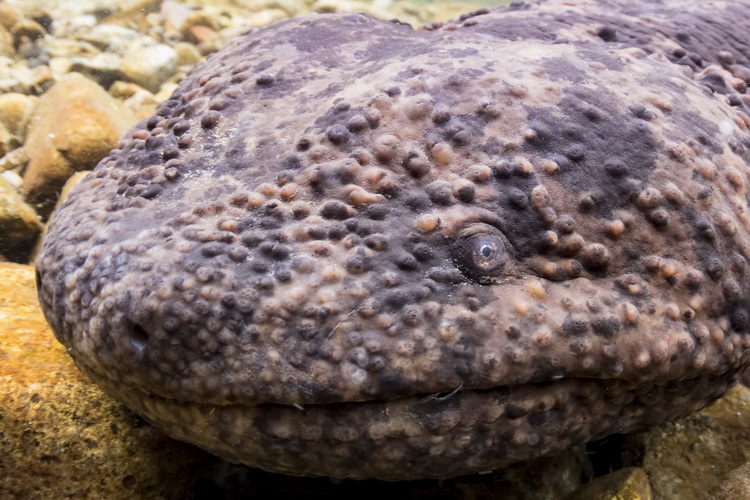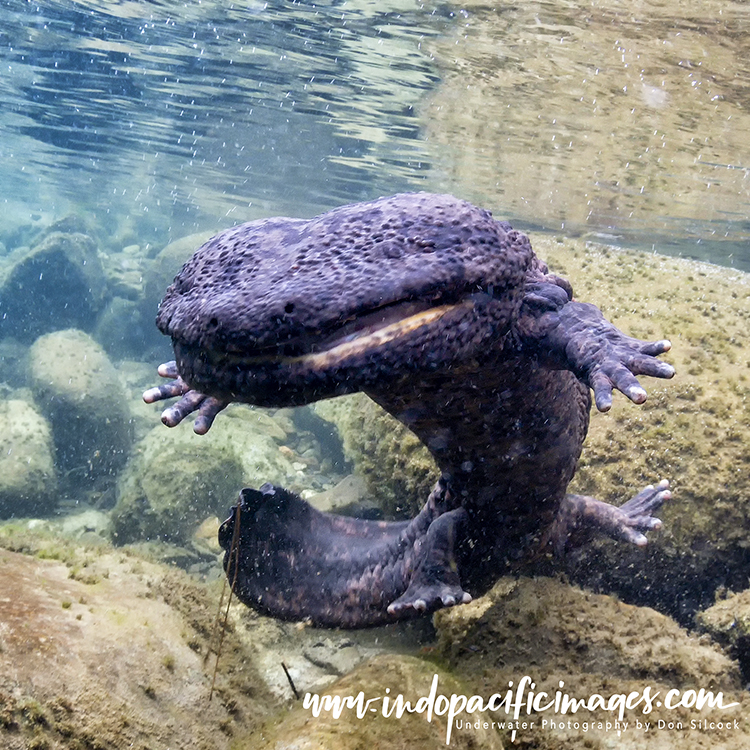Photographing the Japanese giant salamander can be a little challenging. As they are nocturnal creatures which are quite timid during the daylight hours you are with them.
They are also very well camouflaged with their brown and black mottled skin. Which allows them to they blend in extremely well against the river bottom. Plus they spend a significant amount of time burrowed in to the river bed. So you have to know where to look for them – which means that a guide is essential!

The salamanders have small eyes with poor vision and are very sensitive to light. So there is no way to use strobe lighting without harming the creatures. Therefore natural light and a higher ISO than you might normally use is the only option.

Photographing the Japanese Giant Salamander – Gear…
They are also quite large animals and so a wide-angle lens is the way to go. I personally used the very versatile Tokina 10-17mm lens with my Nikon D500 and Nauticam housing.
Because they are nocturnal (when they feed on insects, frogs and fish) during the day they are almost slothful in nature. Apart that is from when they rise to the surface to get air…. Then they move quite quickly, probably because they are at their most vulnerable.
I think the mid-water shots of the salamanders are the most interesting. They seem to bear more than a passing resemblance to ET at that moment. But you have to be quick as they don’t linger…

They need to take air about every 30 minutes. And so the cycle I got in to during the two days I spent with the salamanders was roughly 25 minutes of rock-watching. Followed by a few minutes of cautious movement as they first start to emerge from the river bed. Then about a minute of hurried activity when they rise to the surface, take their air and return from where they came!
The salamanders don’t like you approaching as they emerge from the river bed. And if you get too close will either start to retreat or shoot off in another direction. So you really are better of backing away a little and being less intimidating.
If you are patient and have a touch of luck you may encounter one of the salamanders out in the open. And if you do then all of your stalking skills will be required to carefully approach. While taking your time so you can get you close enough to get some nice close-ups of these most interesting creatures!

Back To: Complete Japanese Giant Salamander Guide
